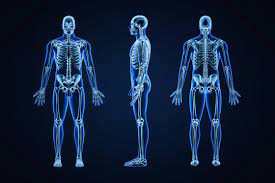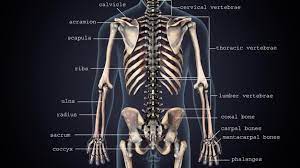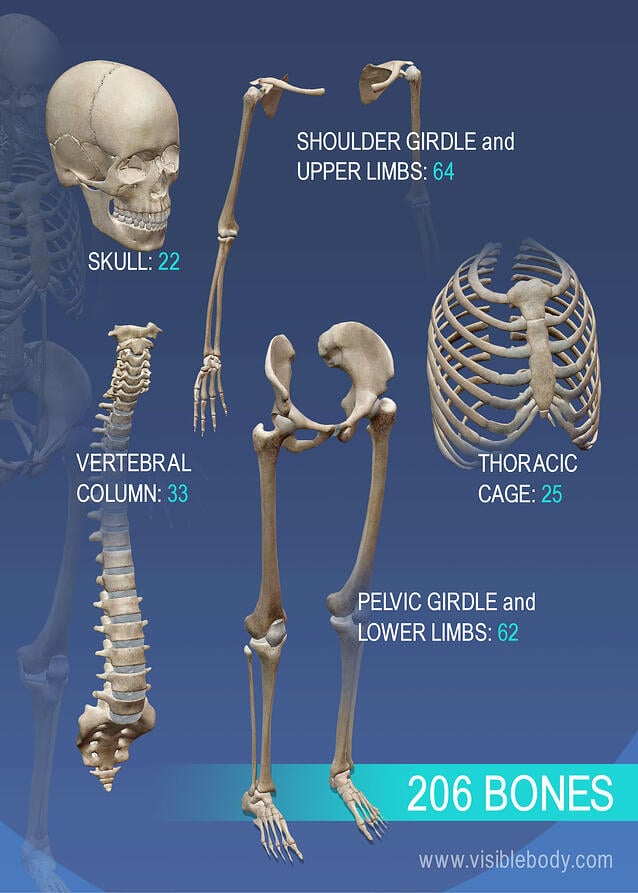Understanding The 8 Computer Generations: Evolution of Computing Technology
Introduction
Computers have undergone a remarkable journey since their inception, evolving through distinct generations that have shaped the landscape of modern technology. Each generation represents a significant leap forward in terms of capabilities, components, and applications, reflecting the relentless pursuit of innovation and progress in the field of computing. By tracing the development of computer generations, we can gain insight into the transformative impact of technology on society and explore the fascinating evolution of these indispensable machines.
First Generation: The Birth of Computing
The first generation of computers emerged in the mid-20th century, marking the dawn of the digital age. These early machines were colossal in size, utilizing vacuum tubes and bulky electromechanical components. The hallmark of this generation was the Electronic Numerical Integrator and Computer (ENIAC), developed during World War II to perform complex calculations for military purposes. ENIAC represented a groundbreaking achievement in computing, showcasing the potential of electronic processing to solve mathematical problems with unprecedented speed and accuracy.
However, first-generation computers were far from user-friendly. They required extensive manual intervention for programming and operation, with programs often written in machine language or low-level assembly code. Furthermore, these machines were prone to frequent hardware failures and consumed vast amounts of electricity, posing significant challenges in terms of reliability and efficiency.
Despite their limitations, first-generation computers laid the foundation for future advancements in computing technology. They paved the way for the development of stored-program architecture and introduced concepts such as binary logic and digital data representation, which remain fundamental to modern computing systems.
Second Generation: The Rise of Transistors
The second generation of computers emerged in the late 1950s and early 1960s, driven by the invention of the transistor. Unlike vacuum tubes, transistors were smaller, more reliable, and consumed less power, revolutionizing the design and functionality of electronic devices. This technological breakthrough enabled the development of smaller, faster, and more versatile computers, ushering in an era of unprecedented innovation and progress.
One of the most notable achievements of the second generation was the introduction of high-level programming languages such as FORTRAN and COBOL, which simplified the process of software development and made computers more accessible to a broader range of users. Additionally, advancements in magnetic core memory and magnetic tape storage facilitated faster data access and improved storage capacity, enabling computers to handle larger and more complex datasets.
Second-generation computers also witnessed the emergence of mainframe systems, which became the backbone of large-scale computing operations in industries such as finance, telecommunications, and scientific research. These powerful machines were capable of executing multiple tasks simultaneously, supporting concurrent users and applications with unprecedented efficiency and reliability.
Third Generation: The Era of Integrated Circuits

The third generation of computers emerged in the late 1960s and early 1970s, characterized by the widespread adoption of integrated circuits (ICs) or microchips. These miniature electronic components combined multiple transistors, resistors, and capacitors on a single semiconductor substrate, dramatically reducing the size and complexity of electronic circuits while enhancing performance and reliability.
The development of integrated circuits paved the way for the miniaturization of computers, leading to the introduction of smaller, more affordable, and more powerful machines. This period saw the rise of minicomputers, which offered significant computational capabilities in a compact form factor, making them suitable for a wide range of applications in business, education, and scientific research.
Moreover, third-generation computers witnessed significant improvements in input/output (I/O) technology, including the introduction of devices such as floppy disks, hard disk drives, and video display terminals. These advancements revolutionized data storage, retrieval, and presentation, enabling users to interact with computers in new and more intuitive ways.
The proliferation of standardized operating systems such as UNIX and the development of time-sharing and multi-user systems further democratized access to computing resources, allowing multiple users to share a single computer simultaneously. This democratization of computing laid the groundwork for the widespread adoption of computers in various industries and fueled the growth of the nascent software industry.
Fourth Generation: The Age of Personal Computing
The fourth generation of computers emerged in the late 1970s and early 1980s, heralding the advent of personal computing. This period was characterized by the development of microprocessors, which integrated the central processing unit (CPU) onto a single chip, along with memory, input/output interfaces, and other essential components. Microprocessors represented a quantum leap in computing technology, enabling the production of affordable, mass-market computers for individual consumers.
The introduction of microcomputers or personal computers (PCs) revolutionized the way people interacted with technology, empowering individuals to perform tasks such as word processing, spreadsheet analysis, and graphic design from the comfort of their homes or offices. Companies like Apple, IBM, and Commodore played a pivotal role in popularizing personal computing, introducing iconic products such as the Apple II, IBM PC, and Commodore 64.
Furthermore, the fourth generation witnessed significant advancements in software development, with the emergence of graphical user interfaces (GUIs), desktop publishing software, and networking protocols. GUIs, in particular, simplified the user experience by replacing text-based interfaces with visual elements such as icons, windows, and menus, making computers more intuitive and accessible to non-technical users.
The proliferation of software applications and the establishment of open standards facilitated interoperability and compatibility between different computer systems, fostering innovation and competition in the software market. This period also saw the emergence of the internet and the World Wide Web, which transformed computing into a global phenomenon, connecting people, businesses, and information across geographical boundaries.
Fifth Generation: The Age of Connectivity and Convergence
The fifth generation of computers emerged in the late 20th century and continues to evolve in the present day, driven by advancements in networking, telecommunications, and digital technologies. This generation is characterized by the proliferation of interconnected devices and the convergence of computing, communication, and entertainment technologies.
One of the defining features of fifth-generation computing is the widespread adoption of the internet and mobile computing devices, such as smartphones, tablets, and wearable gadgets. These devices leverage wireless connectivity and cloud computing infrastructure to provide ubiquitous access to information and services, enabling users to stay connected and productive anytime, anywhere.
Furthermore, fifth-generation computers are characterized by the increasing use of artificial intelligence (AI) and machine learning algorithms to automate tasks, analyze data, and make intelligent decisions. AI-powered applications such as virtual assistants, recommendation systems, and autonomous vehicles are becoming increasingly prevalent, transforming industries ranging from healthcare and finance to transportation and manufacturing.
Moreover, fifth-generation computing is marked by the emergence of pervasive computing environments, where interconnected devices seamlessly integrate into the fabric of everyday life. The Internet of Things (IoT) phenomenon, characterized by the proliferation of smart sensors, actuators, and embedded systems, is reshaping how we interact with our surroundings, enabling smart homes, cities, and infrastructure.
The evolution of computer generations reflects the relentless march of technological progress and innovation, shaping the way we live, work, and communicate in the digital age. From the bulky behemoths of the first generation to the sleek and interconnected devices of the fifth generation, computers have undergone a remarkable transformation, becoming indispensable tools that empower individuals, businesses, and societies to thrive in an increasingly complex and interconnected world. As we look to the future, the next generation of computers promises to push the boundaries of what is possible, unlocking new opportunities and challenges that will shape the course of human history for generations to come.
Sixth Generation: The Era of Quantum Computing and Beyond

As we venture into the realm of the sixth generation of computers, we are on the cusp of revolutionary breakthroughs that promise to redefine the very fabric of computing. At the forefront of this evolution is quantum computing, a paradigm-shifting technology that leverages the principles of quantum mechanics to perform calculations at speeds and scales previously unimaginable.
Quantum computers harness the unique properties of quantum bits, or qubits, which can exist in multiple states simultaneously, enabling them to process vast amounts of data in parallel. This parallelism, combined with the phenomenon of quantum entanglement, allows quantum computers to solve complex problems with exponential speedup compared to classical computers.
While still in its infancy, quantum computing holds the potential to revolutionize fields such as cryptography, materials science, drug discovery, and optimization, unlocking new frontiers of innovation and discovery. Companies and research institutions around the world are racing to develop practical quantum computing systems, with significant progress being made in both hardware and software technologies.
Beyond quantum computing, the sixth generation of computers is likely to witness advancements in other emerging technologies such as neuromorphic computing, which seeks to mimic the structure and function of the human brain using artificial neural networks. Neuromorphic computing holds the promise of achieving unprecedented levels of energy efficiency and cognitive capabilities, paving the way for intelligent machines that can learn, adapt, and evolve in real-time.
Additionally, the sixth generation may see further integration of computing technologies into everyday objects and environments, blurring the lines between the physical and digital worlds. Augmented reality (AR) and virtual reality (VR) technologies are poised to transform how we interact with information and immersive experiences, while advancements in robotics and automation promise to revolutionize industries such as manufacturing, healthcare, and transportation.
Furthermore, the sixth generation of computers may bring about advancements in quantum communication and quantum networking, enabling secure and ultra-fast transmission of data over long distances. Quantum encryption techniques based on the principles of quantum mechanics offer unparalleled levels of security, making them ideal for protecting sensitive information in an increasingly interconnected world.
The sixth generation of computers holds the promise of ushering in a new era of computing that transcends the limitations of classical systems and unlocks the full potential of quantum and other emerging technologies. From quantum computing and neuromorphic computing to augmented reality and quantum communication, the sixth generation represents a convergence of cutting-edge innovations that have the power to reshape our world in profound and unexpected ways. As we embark on this journey of discovery and transformation, it is essential to embrace the opportunities and challenges that lie ahead, harnessing the power of technology to address pressing global issues and create a brighter future for generations to come.
Seventh Generation: The Era of Ubiquitous Computing and AI Integration
As we delve deeper into the realm of computing, the seventh generation emerges as a convergence of ubiquitous computing and artificial intelligence (AI) integration. This era is characterized by the seamless integration of computing technologies into every aspect of our lives, creating a ubiquitous computing environment where digital intelligence permeates the physical world.
At the heart of the seventh generation is the proliferation of smart devices and sensors embedded in everyday objects, transforming them into interconnected nodes within a vast network of intelligent systems. These smart devices leverage AI algorithms to analyze data, anticipate user needs, and autonomously perform tasks, enhancing efficiency, convenience, and productivity in various domains.
The Internet of Things (IoT) continues to play a central role in the seventh generation, enabling the interconnection of billions of devices ranging from smartphones and wearable gadgets to household appliances and industrial equipment. This interconnected ecosystem facilitates real-time data collection, monitoring, and control, enabling new applications and services that enhance quality of life, optimize resource utilization, and drive economic growth.

Moreover, the integration of AI technologies such as machine learning, natural language processing, and computer vision into everyday devices and applications further amplifies their capabilities and intelligence. AI-powered virtual assistants, chatbots, and recommendation systems personalize user experiences, automate routine tasks, and provide valuable insights and recommendations, enriching human-computer interaction and decision-making processes.
In addition to consumer applications, AI integration is revolutionizing industries such as healthcare, finance, transportation, and agriculture, where intelligent systems are deployed to optimize operations, improve outcomes, and drive innovation. From predictive analytics and personalized medicine to autonomous vehicles and precision agriculture, AI is transforming how we work, live, and interact with the world around us.
Furthermore, the seventh generation of computing is characterized by advancements in edge computing, fog computing, and distributed intelligence, which enable processing and analysis of data closer to the source, reducing latency, bandwidth requirements, and reliance on centralized infrastructure. This distributed computing paradigm empowers edge devices to perform complex tasks autonomously while leveraging cloud resources for scalability, storage, and collaboration.
As we navigate the complexities of the seventh generation, it is essential to address challenges related to data privacy, security, and ethical considerations associated with AI-driven systems. Safeguarding sensitive information, ensuring transparency and accountability in algorithmic decision-making, and mitigating biases and unintended consequences are critical aspects of building trust and confidence in the digital technologies that underpin our interconnected world.
The seventh generation of computing represents a convergence of ubiquitous computing and AI integration, where digital intelligence permeates every aspect of our lives, reshaping how we interact with technology and each other. By harnessing the power of ubiquitous computing and AI-driven innovation, we have the opportunity to create a more intelligent, efficient, and inclusive future that benefits individuals, businesses, and societies worldwide. As we embrace the possibilities of the seventh generation, let us strive to harness technology responsibly, ethically, and sustainably to address the complex challenges and opportunities that lie ahead.
Eighth Generation: The Era of Ethical and Sustainable Computing
As the evolution of computing continues unabated, the eighth generation emerges as a pivotal juncture characterized by a heightened emphasis on ethical and sustainable computing practices. In this era, technological advancements are coupled with a growing recognition of the social, environmental, and ethical implications of digital technologies, driving a paradigm shift towards more responsible and inclusive innovation.
At the core of the eighth generation is a renewed focus on ethical considerations in the design, development, and deployment of computing systems. This includes addressing issues such as algorithmic bias, fairness, transparency, and accountability to ensure that AI-driven technologies uphold fundamental human rights, promote diversity and inclusivity, and mitigate unintended consequences that may perpetuate discrimination or harm vulnerable populations.
Moreover, the eighth generation places a premium on sustainability, seeking to minimize the environmental impact of computing infrastructure and mitigate the carbon footprint associated with digital technologies. This entails adopting energy-efficient hardware designs, optimizing software algorithms, and transitioning towards renewable energy sources to reduce greenhouse gas emissions and promote ecological resilience in the face of climate change.
In addition to ethical and sustainability considerations, the eighth generation of computing is characterized by a shift towards decentralized and democratized technology ecosystems that empower individuals and communities to participate in decision-making processes and shape the future of technology. Open-source software, collaborative innovation platforms, and decentralized governance models foster transparency, interoperability, and co-creation, enabling diverse voices to contribute to the development of digital solutions that address local and global challenges.
Furthermore, the eighth generation embraces interdisciplinary approaches that integrate insights from diverse fields such as ethics, sociology, psychology, and environmental science into the design and implementation of computing systems. This holistic perspective recognizes the complex interplay between technology and society and seeks to foster ethical leadership, critical thinking, and responsible innovation among technologists, policymakers, and other stakeholders.
As we navigate the complexities of the eighth generation, it is essential to foster a culture of ethical reflection, continuous learning, and collaboration across disciplines to address the multifaceted challenges and opportunities of our digital age. By prioritizing ethical principles, sustainability goals, and inclusive practices, we can harness the transformative power of technology to create a more equitable, resilient, and compassionate world for present and future generations.

Conclusion
In conclusion, the eighth generation of computing represents a critical inflection point in the evolution of technology, where ethical and sustainable considerations are elevated to the forefront of innovation. By embracing principles of ethical leadership, environmental stewardship, and social responsibility, we can harness the potential of computing to advance human flourishing, promote planetary well-being, and foster a more just and equitable society for all. As we embark on this journey towards a more ethical and sustainable future, let us strive to build technologies that reflect our shared values and aspirations, empowering individuals and communities to thrive in harmony with the natural world.














